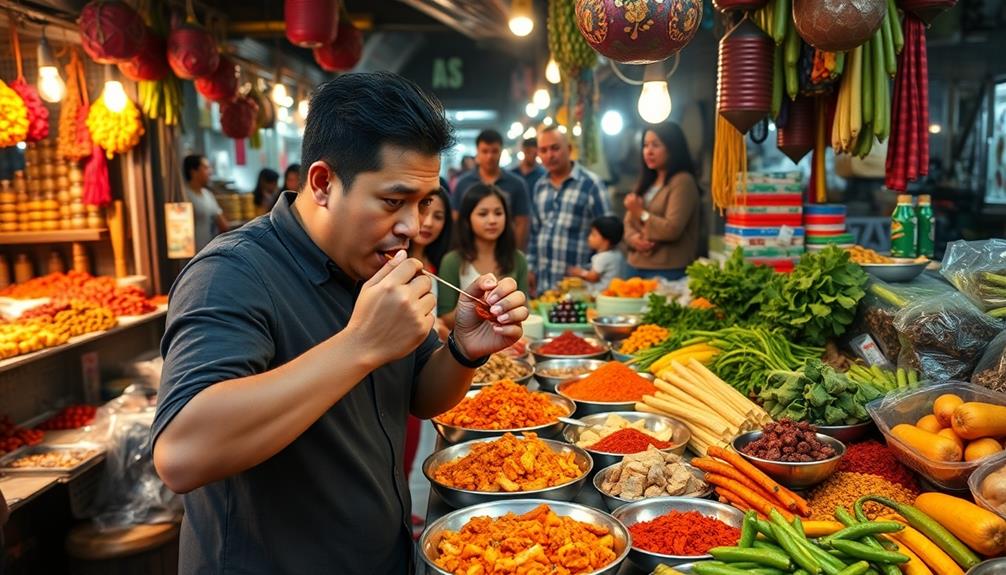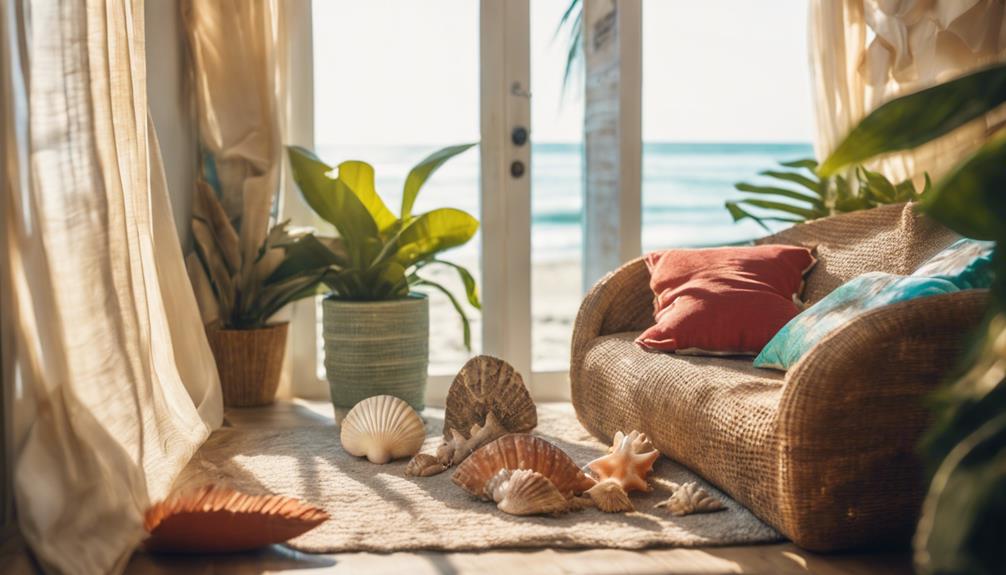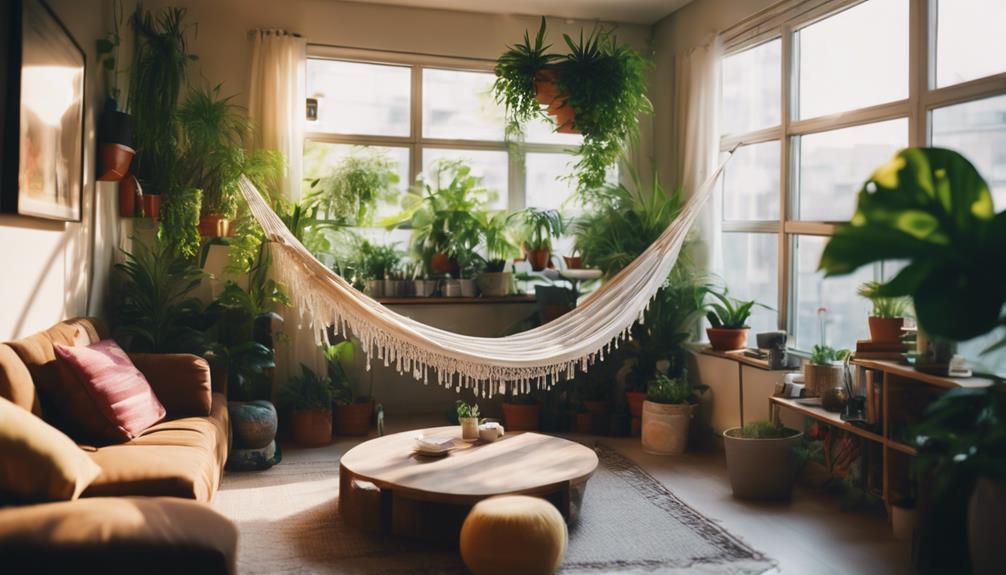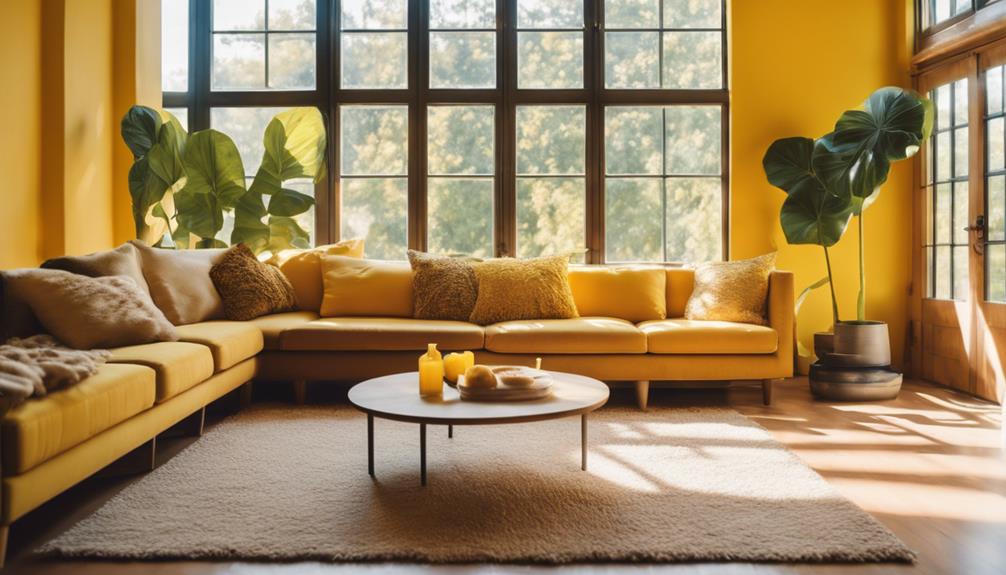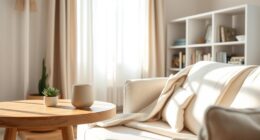Some people are more adventurous eaters because of a combination of genetics and upbringing. Your early experiences with food can shape your willingness to try new flavors. If you grew up in a household that encouraged variety, you're likely to be more open to unique dishes. Additionally, adventurous eaters often have a broader palate, leading to healthier dietary choices and lower body mass indexes. This curiosity toward different cuisines not only enhances culinary experiences but also promotes better health. To uncover more insights on what influences your taste preferences, keep exploring.
Key Takeaways
- Adventurous eaters often have higher incomes, enabling them to explore diverse culinary experiences and invest in unique dishes.
- Genetic predispositions and early food exposure significantly influence individuals' willingness to embrace adventurous eating versus sticking to familiar flavors.
- Positive childhood experiences with a variety of cuisines foster openness to new tastes and reduce food neophobia in adulthood.
- Social interactions, such as hosting dinner parties, encourage adventurous eaters to share and explore new culinary discoveries with others.
- Cultural background plays a crucial role, as exposure to diverse culinary traditions enhances appreciation for bold flavors and unique ingredients.
Characteristics of Adventurous Eaters
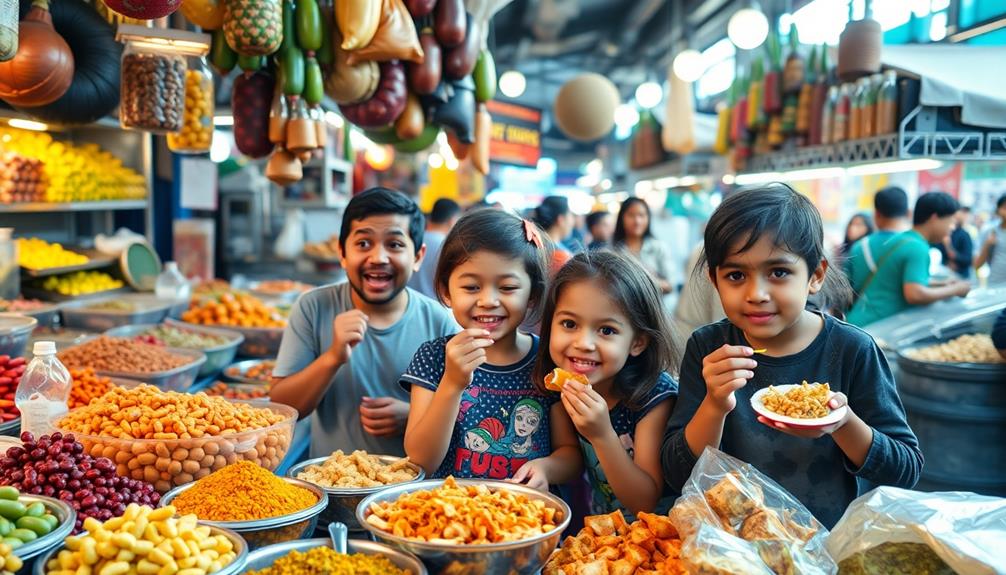
Adventurous eaters often stand out with their distinctive traits that set them apart from more cautious eaters. You'll likely notice that adventurous eaters tend to have higher salaries, reflecting their willingness to invest in diverse culinary experiences. This financial freedom allows you to explore new flavors and dishes without hesitation.
They may even find joy in trying unique dishes like Dorayaki (Red Bean Pancake), which showcases their readiness to embrace traditional treats from different cultures.
Moreover, adventurous eaters are social beings, often hosting dinner parties to share their culinary discoveries with friends and family. You might find them enthusiastic to introduce others to exotic foods and global culinary heritages, showcasing their curiosity about different cultures through their plates.
Interestingly, studies reveal that adventurous eaters typically boast a lower body mass index (BMI). This suggests a possible connection between their diverse eating habits and healthier body weights. When you embrace a wide variety of foods, you're more likely to enjoy balanced nutrition.
Lastly, adventurous eaters often have tried nine or more exotic foods, highlighting their openness to unfamiliar flavors and textures. This readiness to experiment with food not only enhances your culinary experiences but also broadens your palate and understanding of global cuisines.
Traits of Unadventurous Eaters
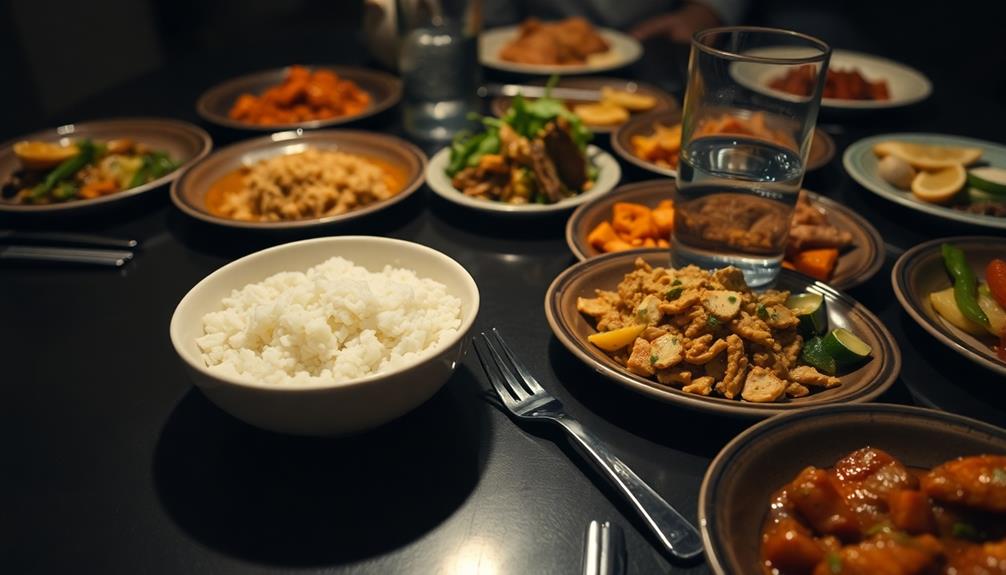
What drives unadventurous eaters to stick with familiar foods? For many, convenience is key. You might find yourself reaching for quick, easy-to-prepare meals, prioritizing practicality over trying new dishes.
Picky eaters often follow the crowd, influenced by celebrity endorsements that promote familiar brands. Instead of exploring new flavors, you're more likely to grab products that have caught your eye due to their aesthetically pleasing packaging, often overlooking taste or nutritional value. This can lead to a missed opportunity for experiencing diverse cuisines, like Chinese dishes such as Red-Braised Pork Belly or Sichuan Cold Noodles, both of which offer rich flavors and unique textures.
Cost is another significant factor. You may hesitate to invest in exotic foods that don't align with your usual preferences, leading to a diet that's predictable and limited.
This reluctance to experiment means you often stick to a narrow range of flavors and dishes, reinforcing your unadventurous eating habits. Ultimately, these traits reflect a comfort zone that can be hard to break.
While you might enjoy the familiarity of your favorite meals, it can also limit your culinary experiences. Embracing new flavors could open up a world of possibilities, but for now, sticking with what you know feels safe and satisfying.
Research Findings on Eating Habits

You might be surprised to learn how genetic factors and early food exposure shape your eating preferences.
Research shows that your upbringing plays a significant role in whether you embrace adventurous eating or stick to familiar flavors.
For instance, those exposed to diverse culinary traditions, such as Brazilian cuisine, may develop a greater appreciation for bold flavors and unique ingredients.
Understanding these influences can help you appreciate the diverse food choices available to you.
Genetic Influences on Preferences
Genetic influences on food preferences reveal a captivating interplay between biology and behavior. Your genetic predisposition plays a significant role in shaping what you enjoy eating. Research shows that around two-thirds of the variation in food neophobia—fear of trying new foods—is hereditary.
If you find certain flavors, especially bitterness, off-putting, it could be linked to variations in your taste receptor genes. This genetic aversion can make you more prone to picky eating behaviors, as highlighted by a Finnish study. Notably, those who embrace diverse cuisines, such as Mushroom Masala, may have a different genetic makeup that allows them to appreciate various flavors and textures.
Additionally, genetic factors can affect how comfortable you feel with nontraditional food textures. If you're hesitant to engage with adventurous dishes, it mightn't just be a matter of choice; it could stem from your genetic makeup.
Understanding these genetic influences can provide valuable insights into why some people embrace dietary diversity while others stick to familiar foods. By recognizing the genetic predisposition at play, you can appreciate the complexity of your eating habits and perhaps even challenge yourself to explore new flavors that mightn't initially appeal to you.
Upbringing and Food Exposure
Childhood experiences with food lay the groundwork for adult eating habits, influencing your willingness to try new dishes. Your upbringing plays a vital role in shaping these experiences. When you're exposed to a variety of foods as a child, you're more likely to develop an adventurous palate.
For instance, engaging in festive cooking activities, like preparing Graveyard Taco Dip, can create positive associations with diverse flavors and textures. If your parents or caregivers embrace diverse cuisines, you tend to mimic their choices, fostering a willingness to explore new flavors.
Cultural practices around food also impact your eating behavior. If your family celebrates food diversity, you're likely to feel more comfortable trying unfamiliar dishes. On the flip side, a more restrictive food environment may lead to pickiness.
Encouragement from your parents to taste and enjoy new foods can help break down those barriers, promoting an adventurous attitude toward eating.
Social settings, such as family meals, further enhance your openness. Sharing meals where different dishes are present can lead to a greater willingness to experiment.
Evolutionary Insights on Food Choices
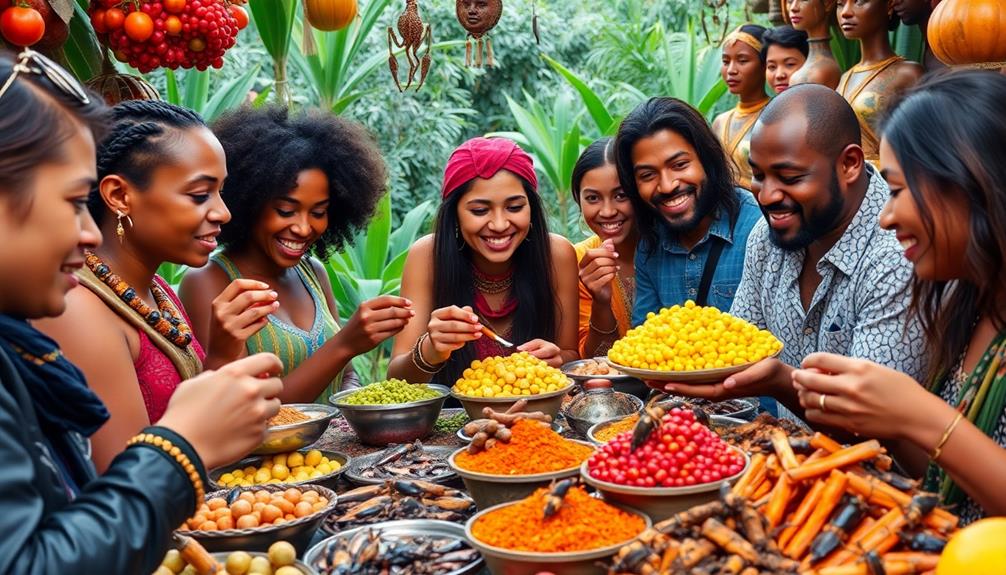
Understanding our food choices through an evolutionary lens reveals why nutritional variety is vital for our health. Historically, early humans thrived on diverse diets, which provided essential nutrients needed for survival.
For instance, traditional dishes like Muamba De Galinha highlight the importance of incorporating a variety of ingredients for rich flavors and nutrients.
Today, facing modern challenges of nutrient density, embracing adventurous eating can help combat dietary deficiencies and promote better health.
Nutritional Variety Importance
Why is nutritional variety so fundamental for our health? Evolutionary biology shows that our ancestors thrived on diverse diets, which were vital for meeting their macronutrient needs and ensuring survival. This diversity not only helped them adapt to their environments but also laid the groundwork for our own dietary preferences.
For instance, traditional Indonesian dishes like Kue Putu and Dadar Gulung exemplify how diverse ingredients can create nutrient-rich meals. When you embrace adventurous eating, you open yourself up to a wider array of vitamins, minerals, and nutrients essential for peak functioning.
Studies link a varied diet to better health outcomes, revealing that people who enjoy adventurous eating often have lower body mass indices (BMI). In today's food environment, where nutrient-dense options are frequently scarce, exploring different foods becomes even more important.
Historical Dietary Necessities
Throughout history, humans have adapted their diets to meet the ever-changing demands of their environments. Early humans thrived on diverse diets, which were essential for fulfilling macronutrient requirements. As they faced varying conditions, their need for a wide range of foods became fundamental for survival.
This evolutionary drive for food variety is closely linked to nutrient needs, suggesting that those who embrace adventurous eating can enhance their overall health and well-being. For instance, indulging in unique flavors and textures, such as those found in traditional dishes like Kawarma (Preserved Meat), can provide important nutrients while enriching culinary experiences.
By exploring unfamiliar foods, adventurous eaters align themselves with natural dietary inclinations rooted in ancestral patterns of foraging. These historical dietary necessities shape our modern eating behaviors, making a willingness to try new foods not just a personal preference but a biological advantage.
Research indicates that a diverse diet not only supports nutrient intake but also fosters a more balanced lifestyle.
In today's food environments, where nutrient density often falls short, encouraging adventurous eating becomes significant. It's about more than just taste; it's a call to reconnect with our evolutionary past.
Modern Nutrient Density Challenges
Modern diets often reflect a stark contrast to our ancestors' nutrient-rich eating habits, leading to significant health challenges. Today, many of us gravitate towards processed and convenience foods, which often lack the essential nutrients our bodies crave. This shift can discourage adventurous eaters from exploring a diverse range of foods that promote better nutrition and overall health.
Traditional dishes like bulgogi and kimchi exemplify the rich flavors and nutrient density that can be found in Korean cuisine, encouraging individuals to embrace a wider variety of ingredients.
Evolutionarily, humans thrived on variety, as consuming an array of nutrients was essential for survival. By embracing a more adventurous approach to eating, you can reconnect with those instincts and combat modern nutrient density challenges. Research shows that adventurous eaters typically maintain lower body mass indexes (BMIs), highlighting a potential link between dietary variety and healthy weight management.
To address nutrient deficiencies, it's important to emphasize the enjoyment of trying new foods. Make a conscious effort to incorporate colorful fruits, vegetables, whole grains, and lean proteins into your meals.
Marketing Strategies for Adventurous Eating
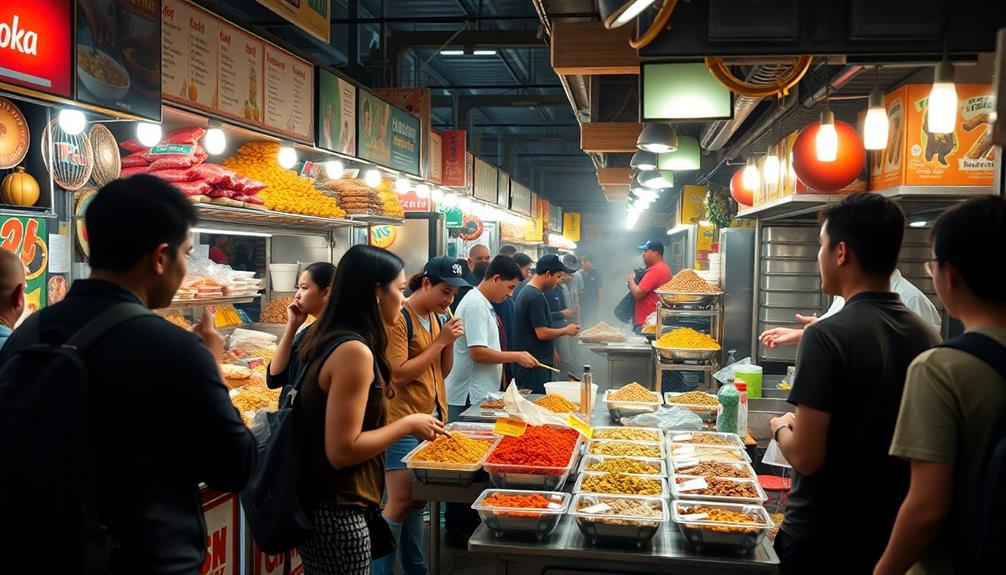
As you explore the world of adventurous eating, effective marketing strategies can make all the difference in attracting curious food lovers. Eye-catching packaging is essential; it piques the interest of adventurous eaters and enhances the appeal of novel food items. When you see vibrant colors and unique designs, you're more likely to pick up something new.
For instance, showcasing exotic dishes like Agnolotti can intrigue those looking to try handmade pasta with unique fillings.
Celebrity endorsements also play a significant role. Just think about how kale skyrocketed in popularity thanks to public figures. This strategy can make unfamiliar foods feel more approachable.
Providing clear preparation information for exotic ingredients helps reduce anxiety about cooking methods, making adventurous eaters more willing to experiment in their kitchens.
Moreover, highlighting the cultural heritage and unique flavors of various foods can resonate strongly with adventurous eaters. They love exploring diverse culinary experiences, so tell the stories behind your products.
Adventurous vs. Picky Eaters

Understanding the differences between adventurous eaters and picky eaters can help you tailor your culinary offerings more effectively. Adventurous eaters are willing to try nine or more exotic foods, while picky eaters often limit themselves to just 2-3 safe options. This distinction can greatly impact your menu.
Here are three emotional triggers to reflect on:
- Fear of Missing Out: Picky eaters might miss out on memorable culinary experiences, feeling left out when others rave about unique dishes.
- Cultural Barriers: What's exotic for one might be commonplace for another. This cultural context can shape perceptions and willingness to try new foods.
- Sensory Sensitivity: Picky eaters often have heightened sensitivities to textures and smells, which may lead to food neophobia, or fear of trying new foods.
Understanding these traits can guide how you present your dishes. While adventurous eaters embrace the thrill of flavor exploration, picky eaters may need more encouragement and assurance.
Your approach can bridge the gap between these two types of eaters, creating a more inclusive dining experience that invites everyone to explore new tastes.
The Role of Upbringing
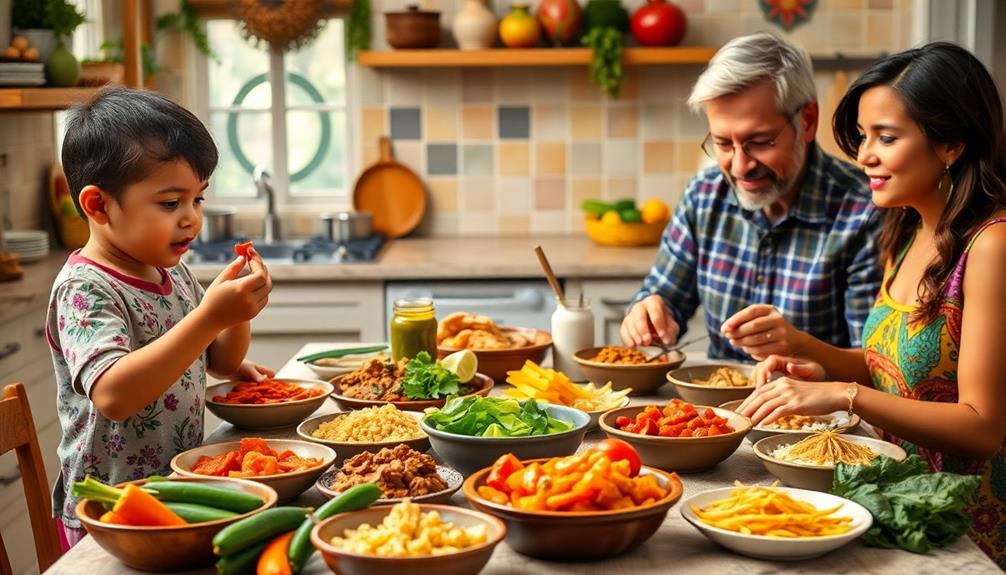
Your childhood experiences with food play a huge role in shaping your adult eating habits.
If your parents encouraged you to try a variety of cuisines, you're more likely to embrace adventurous eating as an adult.
The way your family approached meals can either open your palate or limit it, affecting your willingness to explore new flavors.
Childhood Food Exposure
From the very first bites of solid food, childhood exposure plays an essential role in shaping your future eating habits. When you're introduced to a diverse range of foods early on, you're more likely to develop a willingness to try new flavors as an adult. This exposure influences your palate, making you open to culinary adventures later in life.
Consider these key aspects of childhood food exposure:
- Variety Matters: Trying different dishes during family meals helps you accept diverse culinary experiences.
- Encouragement Counts: When parents encourage you to explore unfamiliar foods, it reduces pickiness and fosters a sense of adventure.
- Cultural Influence: The food environment you grow up in—whether rich in diversity or limited—affects your openness to new tastes.
Ultimately, your early experiences with food set the stage for your eating habits. By embracing a wide array of flavors as a child, you cultivate a more adventurous palate, enabling you to enjoy the rich tapestry of global cuisines later in life.
Your journey into diverse eating begins with those formative moments at the dinner table.
Parental Influence on Choices
Parents play a pivotal role in shaping their children's eating habits, often acting as the primary models for food preferences and choices. When you think about your own food journey, it's likely that your parents' eating habits heavily influenced your willingness to try new foods.
Children often mimic their parents, so if you were exposed to a variety of foods early on, you might be more open to adventurous eating as you grow older.
Cultural practices around food, set by your parents, also dictate whether you lean towards adventurous or picky eating. If your family regularly enjoyed diverse meals together, you probably developed a greater appreciation for different flavors.
Encouragement from parents to try new foods can help lessen food neophobia—the fear of new foods—gradually fostering a more adventurous palate.
Family meals and social settings created by your parents enhance exposure to diverse food experiences, making you more willing to explore unfamiliar dishes.
Ultimately, your upbringing plays a significant role in your eating choices, shaping your relationship with food and influencing your adventurous spirit in the kitchen.
Genetic Influences on Food Preferences

While many people enjoy exploring new cuisines, genetic influences greatly shape food preferences and adventurous eating behaviors. Your genetic predisposition can determine how you react to different flavors and ingredients. Studies show that up to two-thirds of food neophobia, or the fear of trying new foods, is hereditary.
Here are three ways genetics can impact your food choices:
- Taste Sensitivity: Variations in your taste receptor genes may make you more sensitive to bitterness, affecting your willingness to try foods like dark chocolate or Brussels sprouts.
- Ingredient Aversions: Certain genetic traits can create strong aversions to specific flavors, making you less adventurous when faced with unfamiliar dishes.
- Dietary Variety: Those with a genetic inclination towards variety might find themselves more open to new and exotic foods, driven by an evolutionary need for diverse nutrients.
Understanding these genetic influences can help you appreciate why some people embark on culinary adventures, while others prefer familiar comforts.
Embracing your unique genetic makeup could even inspire you to step outside your food comfort zone!
Texture and Sensory Reactions
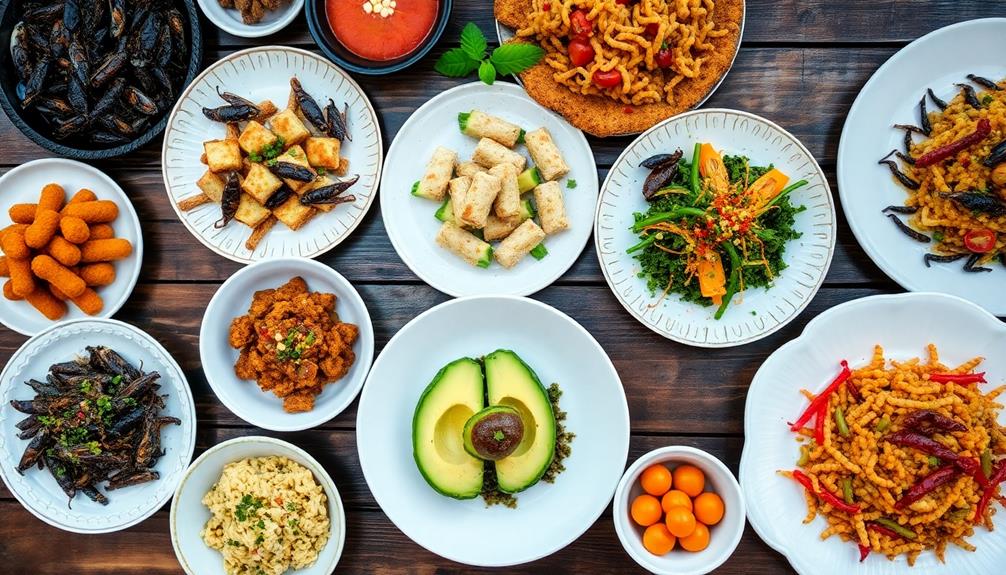
Texture plays an essential role in how you experience food, often influencing your willingness to try new dishes. Your reactions to various textures can be deeply rooted in evolutionary protective mechanisms, making you wary of unfamiliar foods that might seem unsafe. This instinct can drive you to avoid certain dishes based solely on their texture, limiting your adventurous eating.
Genetic factors also play a role in shaping your comfort levels with nontraditional textures. If you're naturally sensitive to specific sensations, you might find it harder to embrace new culinary experiences. Additionally, cultural influences affect texture preferences; what's considered a delicacy in one society may be unpalatable in another.
Early exposure to a range of textures can help reduce biological aversions, encouraging you to explore diverse foods over time. The more you're exposed to different textures, the more likely you're to develop a positive association with them.
Ultimately, your sensory experiences, including taste and texture, are critical in determining how adventurous you're in your eating habits. Embracing new textures can open up a world of flavors that you never thought you'd enjoy.
Need for Further Research

A growing body of evidence highlights the need for further research into the intricacies of adventurous eating behaviors.
Understanding why some people embrace new flavors while others experience food neophobia is essential for enhancing our culinary experiences.
Consider the following areas that demand attention:
- The genetic factors that might account for two-thirds of food neophobia—how much of your adventurousness is inherited?
- The cultural contexts influencing your perceptions of adventurousness—what exotic dishes have you avoided simply because of where you grew up?
- The psychological aspects, like mindfulness and emotional connections to food—how do your feelings about food shape your willingness to experiment?
Frequently Asked Questions
Why Are Some People Pickier Eaters Than Others?
Some folks are pickier eaters due to genetic factors, early food exposure, and cultural influences. Sensory sensitivities and social anxieties can also play a role, making it harder for you to embrace new foods.
Why Do Some People Crave Food More Than Others?
Some people crave food more than others due to genetic influences, emotional connections, nutritional needs, and cultural backgrounds. These factors shape your preferences and desires, making you more or less inclined to seek out certain foods.
What Do You Call Someone Who Is Adventurous With Food?
Imagine a culinary explorer sailing the seas of flavor. You call someone who embraces this journey an "adventurous eater." They immerse themselves in diverse cuisines, savoring every bite, and sharing tales of their delicious discoveries.
What Are the Personality Traits of a Picky Eater?
Picky eaters often exhibit strong preferences, heightened sensitivity to textures, and a fear of new experiences. They might also struggle with anxiety in social situations, desiring control over their food choices to feel secure.
Conclusion
In understanding why some people embrace adventurous eating while others stick to the familiar, it's clear that a mix of traits, upbringing, and even genetics plays a role. You might wonder, does your willingness to try new foods reflect deeper personality traits? As research unfolds, we'll gain more insight into these fascinating differences. Embracing variety in your diet not only broadens your palate but might also enrich your experiences, making every meal an opportunity for adventure.
